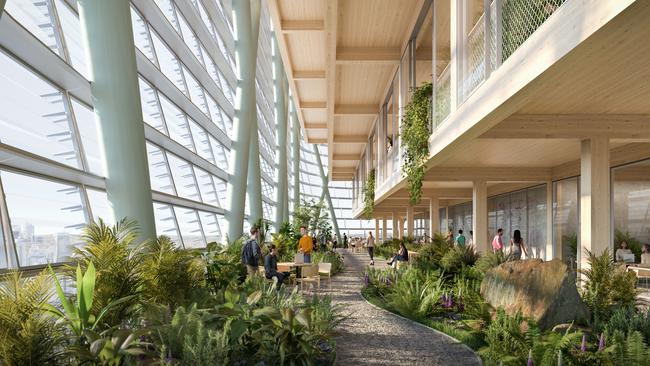
To date, most of the concentration has been on the development of wind and solar power, aimed at reducing coal usage. As we look much harder at carbon reduction, new areas will be affected, led by steel and concrete, which are each responsible for about 8-10 per cent of carbon emissions.
This will affect a large number of listed companies led by BlueScope, Boral, SA Brighton Cement and a vast number of building companies that have operations based around concrete and steel.
Right now politicians advocating lower carbon emissions, from US President Joe Biden down to our state premiers, mouth lower carbon emissions in one speech and in the next propose huge infrastructure involving steel and concrete.
I want to emphasise strongly that I am not proposing suddenly stopping our infrastructure and building industries, but rather am pointing out that these are some of the issues that are going to be debated.
Along with many others in Australia, I was alerted when Fortescue Metals chief Andrew Forrest began discussing the use of hydrogen in the Pilbara to produce “green steel”. In the light the latest statements from Scott Morrison, we need to join Forrest and think more broadly about the fundamental carbon reduction challenge.
So let’s start with steel. If Forrest is right and the world is going to look much harder at whether there is a low-carbon, economic way of producing steel and, if not, how to reduce its use, then Australia’s BHP and London’s Rio Tinto need to be involved.
As the world’s largest iron ore producers, they need to think seriously about following the Forrest path in trying to develop “green steel”. Perhaps they should join him. But is there a substitute for steel?
At the risk of being lampooned by greenies, I suggest that timber is a remarkable carbon-reducing alternative for many uses of steel. Trees absorb carbon from the air and when we use that timber in building it becomes an effective carbon storage. It’s a brilliant carbon-reducing material. But in many areas of the green movement, carbon is a secondary issue because chopping down trees and replanting creates all sorts of other issues. The planet becomes secondary.
To the credit of the timber industry, it is hanging in there despite these pressures, and it is to also developing better ways of using its product so that it can replace steel in a wider range of uses, although certainly not all.
But the community debate about carbon and timber is going to be ferocious.
When it comes to concrete, there are a number of solutions in the wind, but our major concrete producers need to get onto the front foot and look at what can be done to reduce the enormous carbon emissions that come from production. It’s ironic that concrete slabs have replaced the carbon-storing steel-timber in the foundations of houses in some of the carbon-conscious areas of the community.
We are not going to solve these problems overnight, but statements like those of the Prime Minister and Biden alter the long-term game. Those companies that don’t react are in danger of getting left out.
Carmakers are now waking up to electric vehicles but may be too late and could be replaced by Apple and other high-technology brands.
And there are other issues that we can’t keep sweeping under the table if we are to be serious about carbon:
• The crazy actions of NSW and Victoria in plonking down solar and wind farms without proper emergency backup has been high-risk. This summer we were lucky. Thankfully we have started the process of back-up rectification, but it needs to be accelerated.
• We need to determine whether gas should be used as part of the mix. It is a carbon fuel but it greatly enhances the ability to use non-carbon fuels and keep costs down. We are fortunate in Australia in having vast reserves in Gippsland, Victoria of low-cost gas. Sadly, the Victorian government does not want gas of any sort developed irrespective of cost and so far has been happy for consumers and industry to pay high prices.
• If there’s a taboo subject more controversial than the use of timber to lower carbon emissions, it’s nuclear power. But like timber and gas, we are going to have to address this issue.
Today’s nuclear power industry is developing in very different ways to that of 20 years ago. Most now understand that the $220bn submarine is a looming disaster and is being kept going for political reasons. An alternative is to link with the US in nuclear submarines, but that will require a nuclear industry.
I am not advocating the sudden development of vast nuclear operations or a total change in forest management, but we need to start to talking about these “taboo” issues if carbon is to be slashed.
And, of course, we are not alone in these dilemmas.






If Australia is to take carbon reduction to a new level and start aiming at zero carbon emissions, a large number of our largest public companies will need to look much more closely at their fundamental processes.